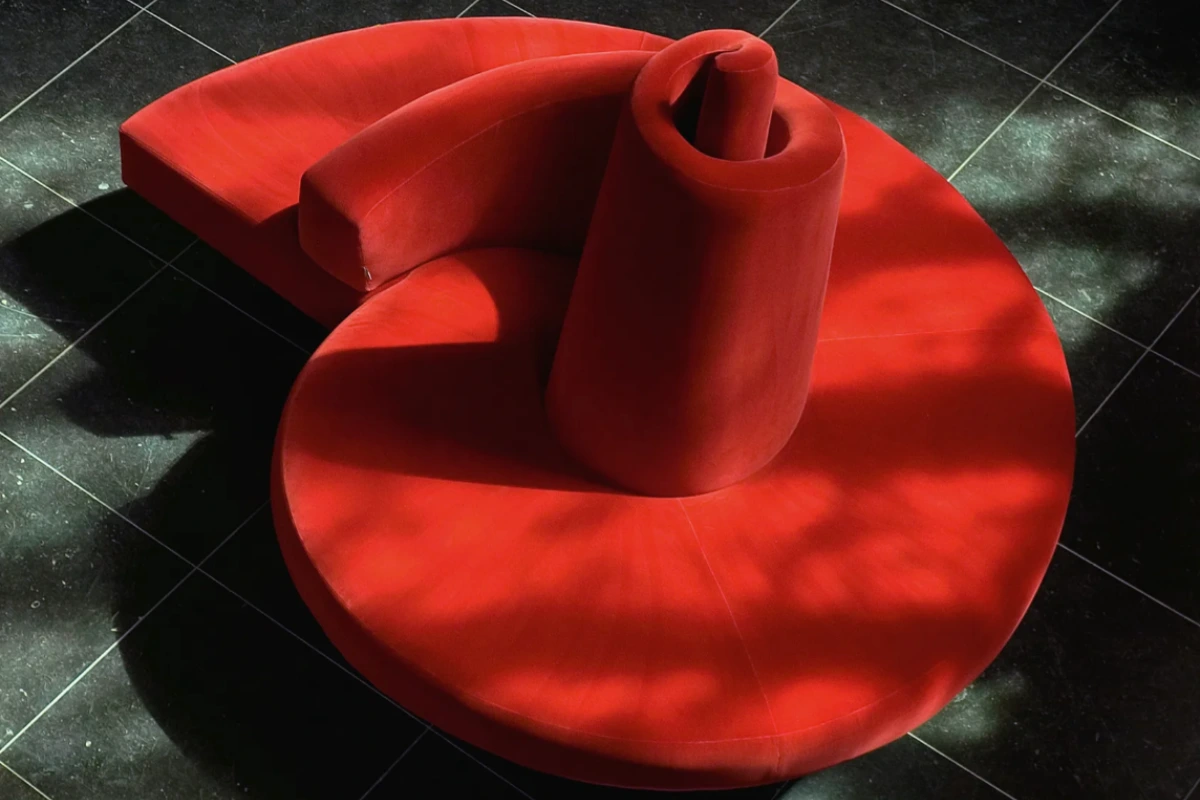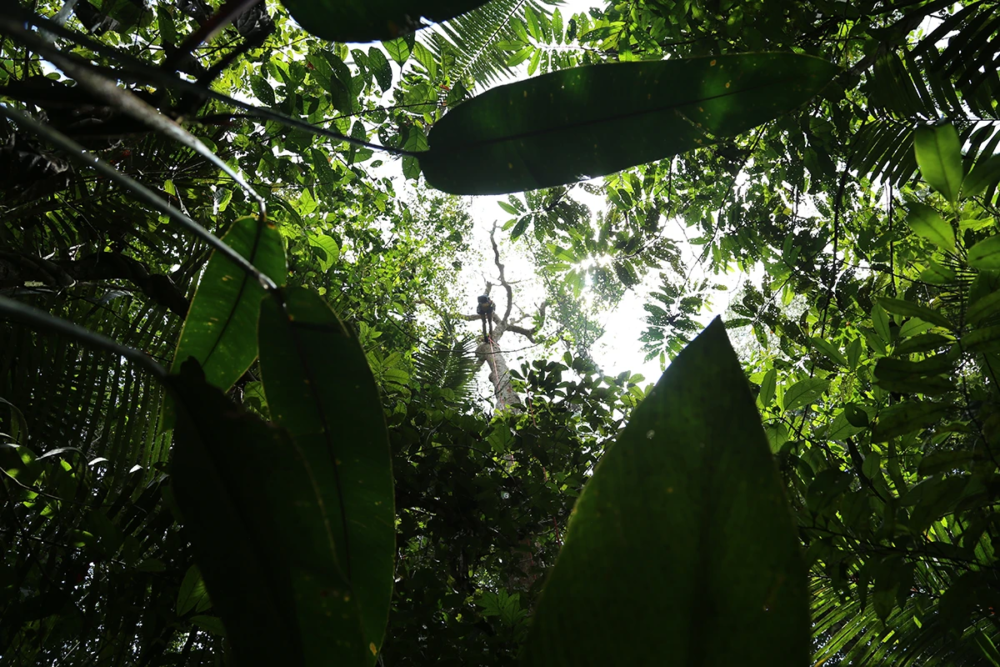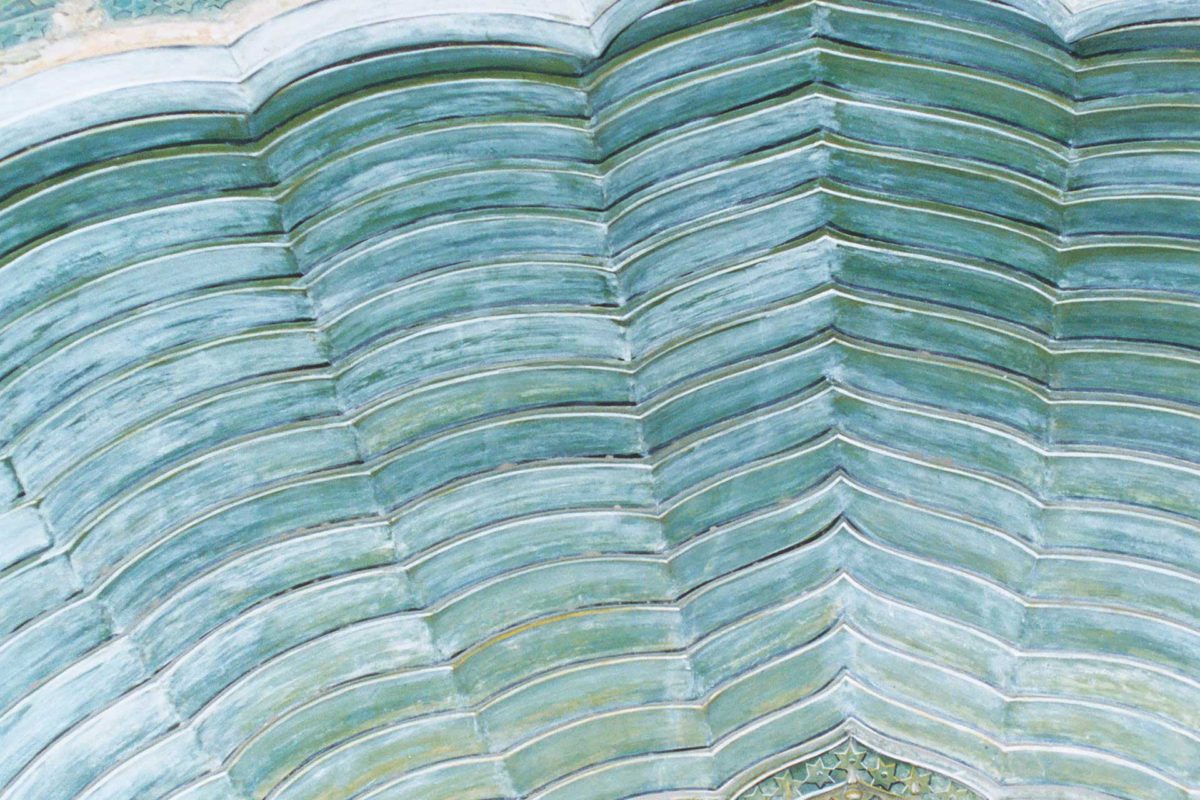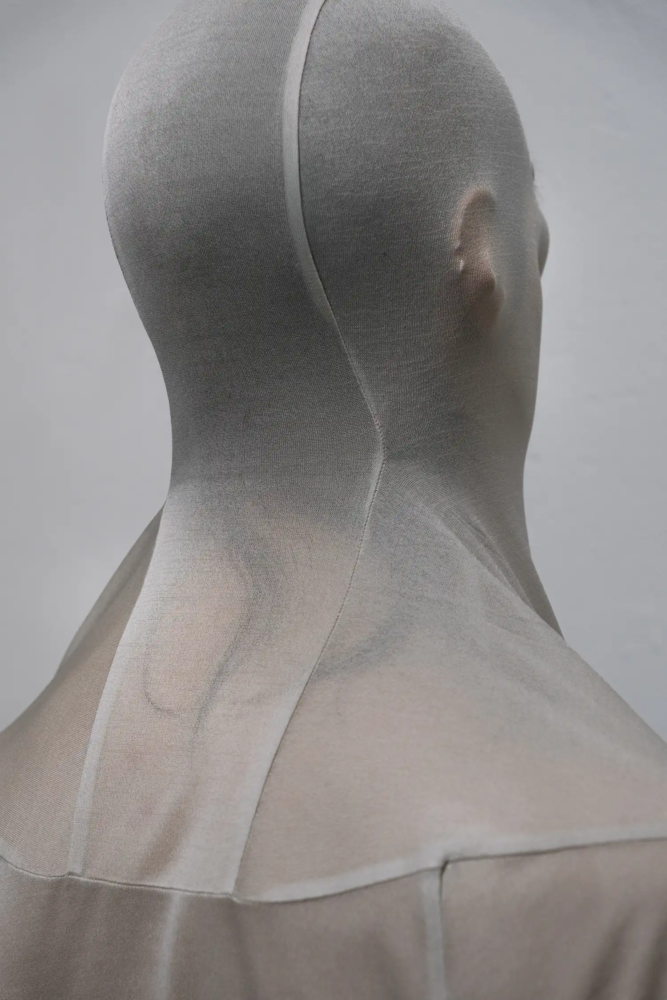
What is velvet? One name, many fibers
What sets velvet apart from other woven fabrics is not the kind of fibers it is formed from but the techniques used to manufacture it. What is velvet made of?
Velvet: What we commonly call velvet is a type of woven fabric
After the industrialization of the textile industry and the advent of artificial textiles, velvet can be manufactured out of an array of fibers. Velvet can be made from natural fibers such as cotton, wool, and silk, artificial ones like viscose and its alternatives, and petroleum-derived synthetics like polyester and nylon. What we commonly call velvet is a type of woven fabric
Percentage-wise, textile manufacturers can mix these fibers to obtain the desired results. Fabrics composed of a single type of fiber are common. In particular, velvet made of 100% polyester is the most easily found, but velvet made of 100% cotton or 100% viscose is also available. As a fabric, velvet can be manufactured out of multiple fibers, a common choice for patterned velvets. There are, in fact, velvets made of around 60% percent viscose or rayon and around 40% polyester, but also ones made of about 80% viscose and about 20% polyester. Manufacturers who wish to add elasticity to their velvets will add elastane, which is referred to as spandex in some regions, a synthetic petroleum-based fiber, to their velvet mix. In these cases, the percentages are about 90% polyester, cotton, or viscose and around 10% elastane.
From a structural standpoint, velvet is characterized by a drape and a pile composed of vertical fibers
The lustrous look and soft feel that velvet has been long known for are the result of its multi-layered structure and its short, dense pile. When this class of fabrics is created, in fact, their threads are bunched up tightly together, giving velvet its firmly woven structure.
This type of fabric has to be woven on a specific kind of loom that can spin two layers of fabric at the same time. Its production process includes a series of steps: the first one is yarn preparation, followed by weaving, dyeing, and finishing.
Depending on the fibers the textile manufacturers choose to employ to make their velvet and the length and density of the pile, this fabric can be loose and sleek like the ones used in the fashion industry or more robust and sturdy like the kinds utilized in upholstery. From a structural standpoint, velvet is characterized by a drape and a pile composed of vertical fibers. This characteristic allows it to catch the light and absorb sounds.
Zooming in on fabrics – Velvet
Derived from the Latin villus meaning ‘tuft, down,’ which then became the medieval Latin villutus, and the Old French veluotte, the word velvet came to us straight from the Middle English period (1150—1500).
This fabric has gained a plurality of associations throughout its history. It’s the material of theater curtains, ushering viewers in worlds of fiction. It’s what drapes the bodies of the people immortalized across the centuries by the brushstrokes of portrait artists like Hans Holbein (c. 1497-1543), Titian (c. 1490-1576), and Elisabeth Louise Vigée Le Brun (1755-1842). Yet, for something so recognizable, the technical specifications of velvet are not as well-known.
There isn’t a single type of velvet – velvet varieties
As the modern iteration of an age-old tradition, contemporary velvet manufacturing combines tools and techniques from different eras and whose manufacturing requires skills and precision. The results are textiles featuring a variety of textures and styles.
Each kind of velvet is characterized by a distinct manufacturing technique that affects its appearance and determines its applications. There is cord velvet with its raised lines, the similar corduroy velvet with its more rounded ribs, the mixed fiber, chemically-treated devoré velvet with its intricate patterns, the jugged-looking froissé variety, the patterned kind commonly used in upholstery, weft velvet which is cut by hand or with specific machines, and the classic warp-knitted velvet, sometimes also called epinglé or velour.
In warp velvets, piles are produced by the warp threads. These are obtained by raising, during the weaving process, the warp of the piles on metal rods arranged in the direction of the weft to create loops that are then cut off. In weft velvets, the piles are formed by passing the weft threads over the warp threads, creating loops that are subsequently severed. This process results in a type of velvet characterized by a pile that follows the weft.
All types of velvet can be manufactured using a variety of fibers in different percentages. Still, velvets with higher levels of complexity tend to be made using a plurality of fibers.
Understanding sustainability in the textile industry – Is velvet a sustainable fabric?
As a fabric that can be manufactured out of a variety of fibers, velvet doesn’t have a set sustainability performance but rather one that depends on the fibers each manufacturer chooses to employ in its production. Due to the differences in feedstock and production processes, each type of fiber manufactured today at an industrial level has specific environmental and social impacts.
Polyester is the most produced fiber in the world, making up 57% of the global fiber production according to Textile Exchange’s latest annual Materials Market Report, and is a fiber from which velvet is often manufactured. Derived from polyethylene terephthalate (PET), a petroleum product, polyester is linked to pollution in each step of its value chain. It affects people and the environment through its adverse impacts on ecosystems, human health, air, land, and water because of its dependency on fossil resources, the multi-staged release of microplastics, and the issue of textile factory wastewater (Palacios-Mateo, van der Meer, Seide, 2021).
Viscose is another fiber from which velvet is often manufactured, and the most widely manufactured man made cellulosic fiber (MMCF) in the world. This semi-synthetic, artificial fiber is manufactured through the purification of cellulose. Being a fiber whose production is carried out through the use of several toxic chemicals, viscose production poses environmental issues in terms of ecosystem degradation, deforestation, and water pollution.
As a fabric, velvet can be manufactured from fibers with better environmental performance than virgin polyester, conventional cotton, and viscose. These more sustainable options include fibers such as organic cotton certified by voluntary standard-setting organizations like Global Organic Textile Standard (GOTS), viscose alternatives like LENZING™ ECOVERO™, and Recycled Claim Standard (GRS) certified recycled polyester.
The recyclability, biodegradability, and compostability of velvet
The sustainability performance of textiles’ post-consumer stage depends on manufacturers’ choices and the availability of adequate recycling technologies. As petroleum-based fibers, synthetics such as polyester and elastane, once discarded, begin a process of degradation in the natural environment that comes with a plethora of environmental and social consequences.
On paper, polyester, a fiber from which velvet is often made, can be recycled via chemical and mechanical recycling processes (Wang, van Putten, Tietema, Parsons, Gruter, 2024). Still, in 2018, the recycling rate for all textiles was 14.7 percent, according to the U.S. Environmental Protection Agency (EPA).
Cotton is the natural fiber from which velvet is more commonly manufactured. Its biodegradation rate is affected by the finishes manufacturers apply to the fabrics, with crosslinking, a chemical treatment that gives fabrics anti-wrinkling properties, making cotton fabrics more resistant to biodegradation (Zambrano, Pawlak, Daystar, Ankeny, Venditti, 2021).
Velvet can be made of blended fibers
Viscose, another fiber textile manufacturers choose for their velvets, can be categorized as a biodegradable fiber in the soil, reaching a biodegradability of 98% after 4 months in a controlled environment (Sülar and Devrim 2019), but conditions in the landfills where clothes end up are different. More sustainable viscose alternatives break down in the natural environment.
According to the Scripps Institution of Oceanography (SIO) of the University of California, San Diego, LENZING™ Lyocell fibers biodegrade in sea-surface conditions and on the seafloor (Royer, Greco, Kogler, Deheyn, 2023). TÜV AUSTRIA has certified LENZING™ Viscose standard fibers as biodegradable in a variety of environments and compostable in industrial and home compost systems.
Velvet can be made of blended fibers. This kind of fabric presents challenges in terms of both recyclability and biodegradability. According to the same study, blends of biodegradable fibers and plastic fibers show poor biodegradability performance due to the non-biodegradable synthetics. In addition, blending fibers makes recycling the resulting fabric more challenging due to the technical difficulties of separating the different components.
Fashion history – From the fabric of kings to a bourgeois staple
The history of velvet is more than the history of a fabric. Like material culture, its history tells a story of variations and transformations in fashion, intercultural exchanges, technological advancement, and societal changes. Thanks to its proximity to the art world, velvet has been behind economic shifts and the trigger of research and development in textile manufacturing.
It’s believed that the techniques used to turn silk threads into a fabric with a dense pile were developed in China in the 13th at the latest. It is believed that this fabric invented in East Asia, reached Europe through its contacts with Western Asia. By the Renaissance, their botteghe had made the Italian city-states of Venice, “la Serenissima,” Florence, and Genoa, “la Superba,” the chief production centers of velvet on the Peninsula.
Velvet manufacturing was a lucrative business in the Renaissance, and velvet merchant guilds had significant power in their cities. The luxurious fabric they produced was employed not only in the Southern European country and in the rest of the continent for anything from clothing to the interiors of carriages and litters, but it also had a characteristic that set it apart from other fabrics with piles. If those could be manufactured on home looms, velvet weaving would be carried out on complex looms, requiring a high level of craftsmanship.
The first loom capable of weaving double velvet was mentioned in 1793 in France
The inventions of Claude Dangon (1550-1631) and Joseph-Marie Jacquard (1752-1834) introduced technological changes in textile manufacturing and velvet production. The first loom capable of weaving double velvet was mentioned in 1793 in France. By the beginning of the 19th century, inventors were patenting such looms in Europe and the States.
French and English innovators further revolutionized velvet weaving throughout this century, turning this ancient craft into an industrialized manufacture. These technological innovations coincided with a growing demand for this fabric, which manufacturers could meet due to the faster production these innovations allowed and the use of cheaper materials.
Despite becoming available to a broader range of people, velvet didn’t lose its association with luxury in the 19th or 20th century. Italian opera composers Verdi, Donizetti, and Rossini wanted their characters to be clad in high-quality velvet, and high fashion houses like Valentino, Saint Laurent, and Balmain all used velvet in their collections.
Using textiles as an art medium – Velvet is not always smooth, (sometimes) it’s rough
Throughout history, plenty of artists working with a variety of mediums, from painting to film, have utilized velvet in their creations as a means to incorporate some of its traditional associations into their work. From Frida Kahlo’s oil-on-canvas painting “Self Portrait in a Velvet Dress” (1926) and the many velvet gowns designed by Walter Plunkett for “Gone with The Wind” (1939) to that created by Eiko Ishioka for the movie “Bram Stoker’s Dracula (1992)” and the several velvet outfits worn by Liv Tyler’s Arwen in the film adaptation of J. R. R. Tolkien’s novel “The Lord of the Rings.”
A group of artists also employed the rougher side of velvet in their works, moving away from its association with all things smooth, either from a thematic or a textural standpoint. This group includes Milanese painter Alfredo Carnelutti, whose experimentation with textile art resulted in his Art Deco velvet woven by the Venetian historical textile company Rubelli for the Art Biennale in 1934 and the designs of Maria Monaci Gallenga.
Maria Monaci Gallenga often employed velvet to replicate the look of metal-leaden Renaissance velvets
In her creations, Italian designer Maria Monaci Gallenga (1880–1944) often employed velvet to replicate the look of metal-leaden Renaissance velvets. The use of intricate, textured historical motifs here was paired with a modern, subtle printing technique that employed metallic pigments to mimic the glistening look of the dense metallic brocades typical of the Renaissance without their stiffness, allowing the fabric to appear woven with metallic threads rather than printed.
Production designer Patricia Norris (1931- 2015) harnessed the rougher, darker side of velvet in her work for David Lynch’s neo-noir horror film “Blue Velvet” (1986). Having previously collaborated with the director in his movie “The Elephant Man” (1980), Norris worked a stormy, textured midnight blue velvet fabric into the visual language of Lynch’s surrealist, psycho-sexual exploration of the rotten core hiding underneath the smooth veneer of American suburbia and human duality. Lynch’s surrealist approach to filmmaking, symbolism, and storytelling takes and adds to one’s understanding of his work, yet it can be said that “Blue Velvet” is a film about looking or instead looking at what’s hidden. In this film, the titular blue velvet that Patricia Norris incorporated into the movie is a visual nod to the roughness hiding underneath what appears smooth and the interplay of light and darkness.
Patricia Norris
Patricia Norris was a costume designer and production designer. Throughout her career, Norris received six Academy Award® nominations for costume design and a Lifetime Achievement Award from the Art Directors Guild.







